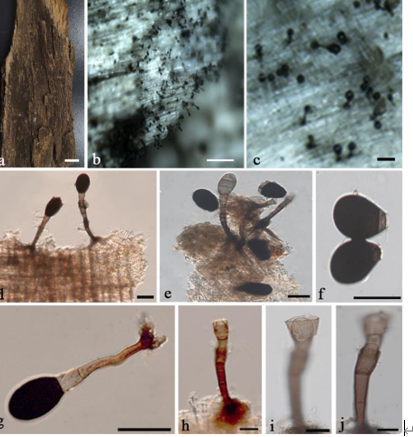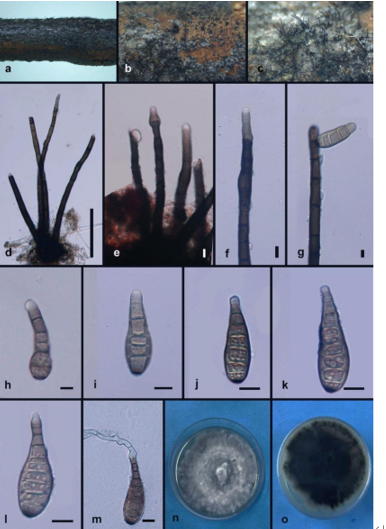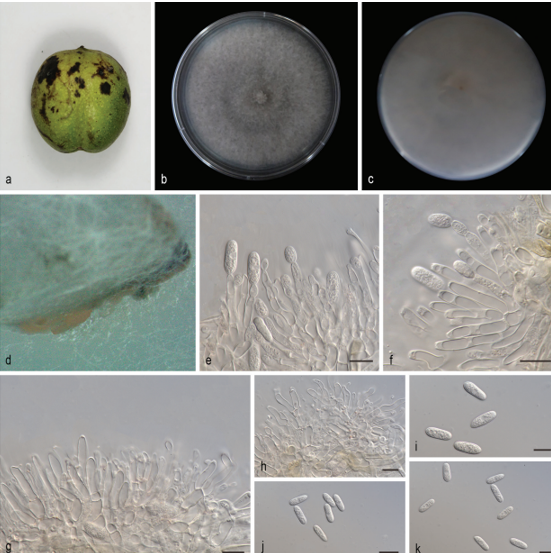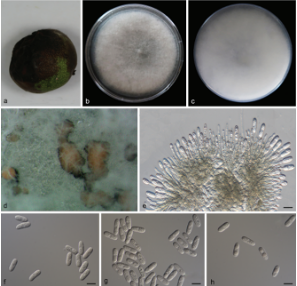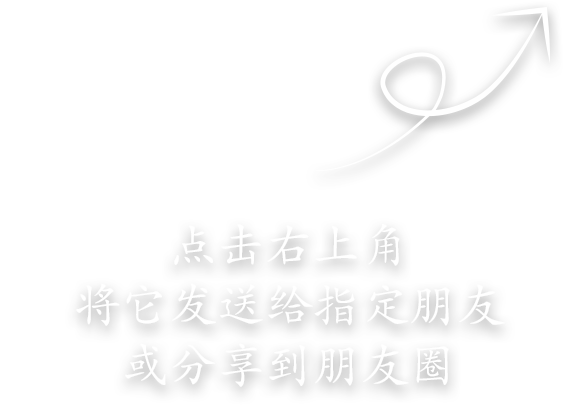Neoconidiobolus thromboides (Drechsler) B. Huang & Y. Nie, comb. nov. 2020
MycoBank No MB831606
Holotype: China, Anhui Province, Plant detritus, 21 Feb 2009, C.F. Wang, RCEF 4492.
Morphological description
Colonies grown on PDA for 3 d at 25 °C, white, reaching ca. 30 mm diameter. Mycelium colourless, filamentous, 5–7.5 μm wide. Primary conidiophores colourless, unbranched and producing a single conidium, 50–122.5 × 6–16.5 μm. Primary conidia forcibly discharged, colourless, globose to subglobose, 20–26.5 μm wide, 26.5–34 μm long, including a basal papilla 6–10 μm wide. Secondary conidia globose, forming from the primary conidia. Zygospores most often formed between segments of separate hyphae. Mature zygospores smooth, globose to subglobose, 25–30 μm in diameter with wall 2–3 μm thick.
Habitat: unidentified
Distribution: China
GenBank Accession:
Notes: The ex-type living culture is ATCC 12587 (United States, New Hampshire, September 1957, Drechsler).
Reference: Nie Y, Yu D-S, Wang C-F et al. (2020) A taxonomic revision of the genus Conidiobolus (Ancylistaceae, Entomophthorales): four clades including three new genera.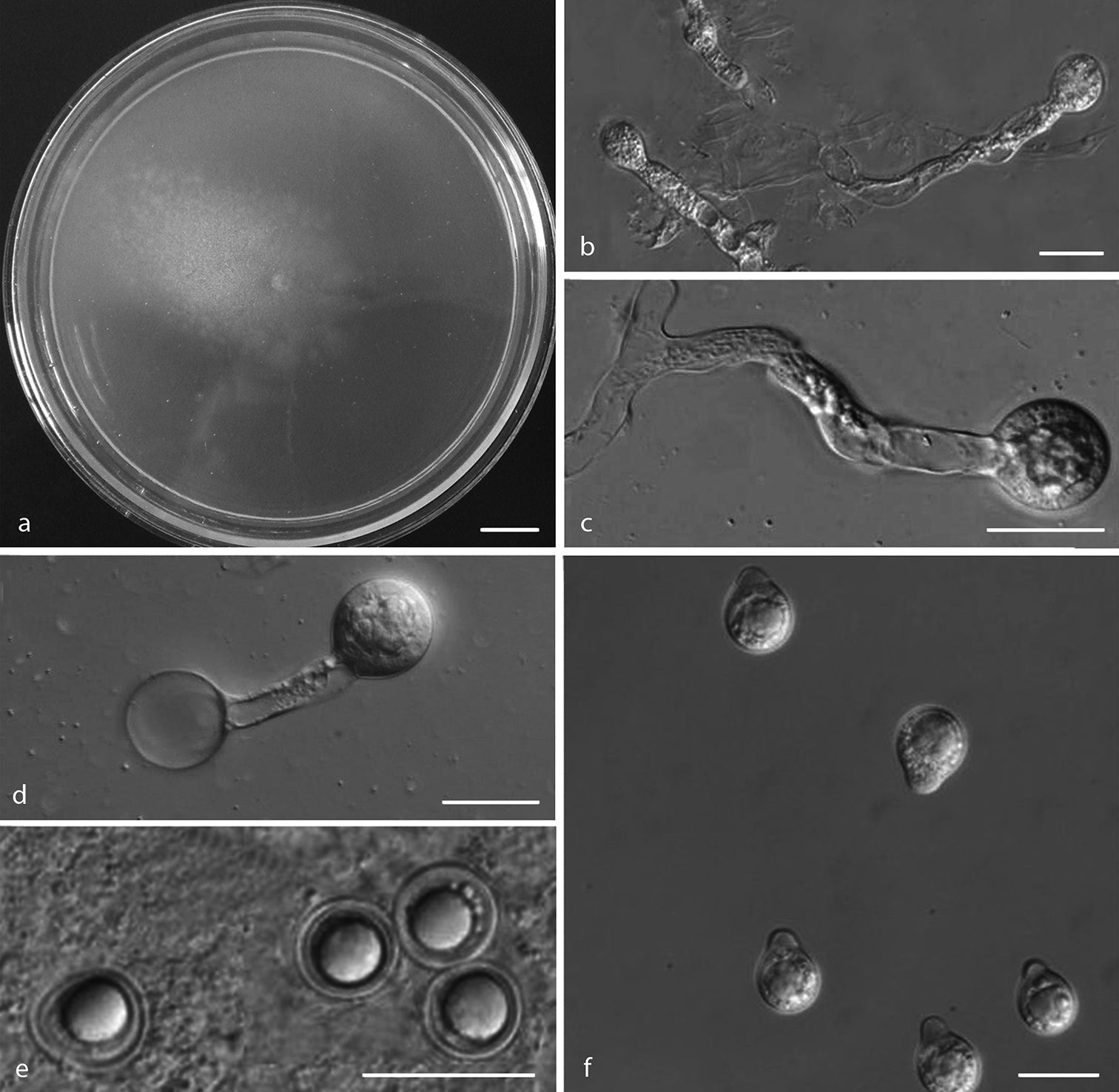
Neoconidiobolus thromboides a colony on PDA after 3 d at 25 °C b, c primary conidiophores bearing primary conidia d production of secondary conidia e zygospores f primary conidia. Scale bars: 10 mm (a); 20 μm (b–d, f); 40 μm (e).


